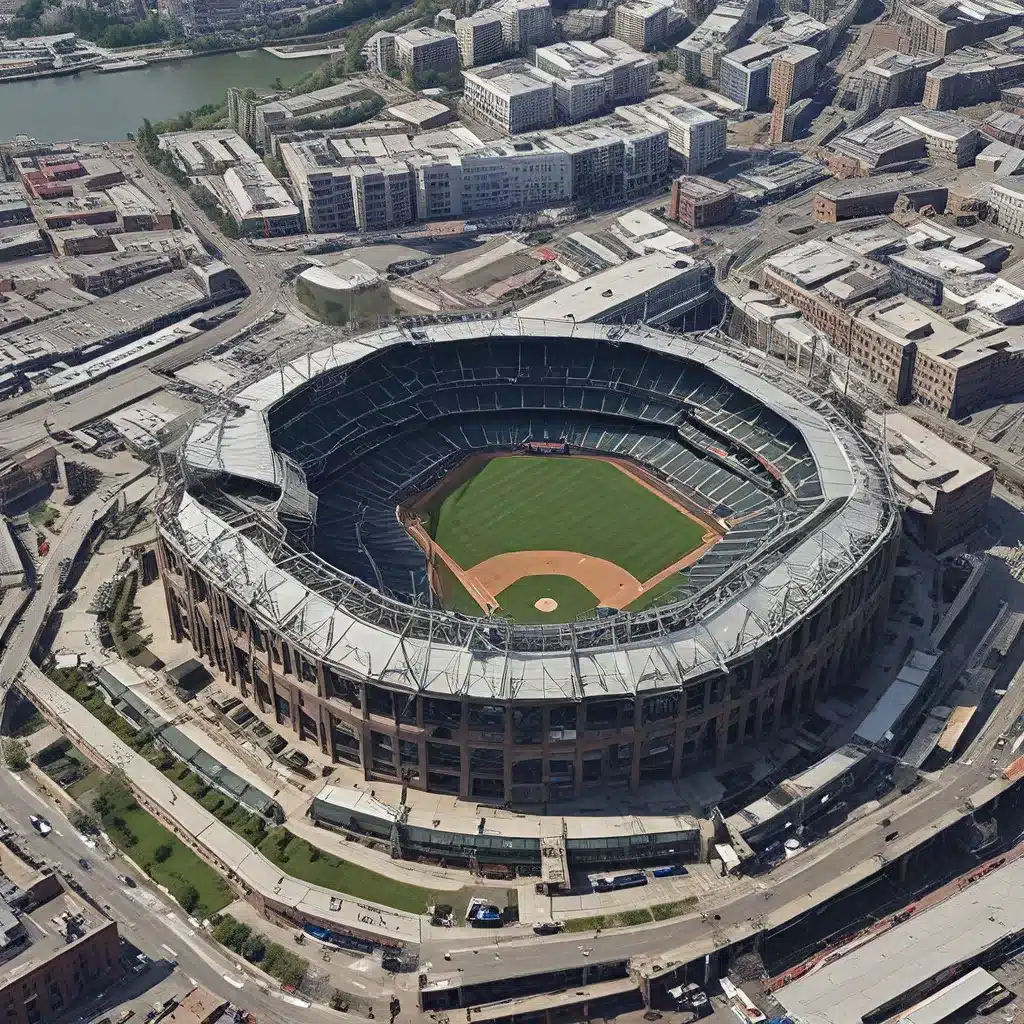
The Mariners’ Longtime Quest for a New Stadium
The Seattle Mariners had long been dissatisfied with their home, the Kingdome, a multi-purpose stadium that opened in 1976. As a series of Mariners owners pointed out, the Kingdome lacked the revenue-producing features of newer baseball stadiums, putting the team at a competitive disadvantage. With the Mariners’ lease set to expire in 1996, the team’s owners were adamant about getting a new, baseball-only stadium with a retractable roof.
In 1995, a task force appointed by King County Executive Gary Locke recommended that the public pay about 65% of the cost of a new stadium, estimated to be between $243 million and $278 million. The task force warned that without such a stadium, the Mariners had no future in Seattle. The state legislature passed a financing plan that would raise the sales tax in King County, but this plan was narrowly defeated by voters in a September 1995 referendum.
The Battle for a New Stadium
Despite the setback, the Mariners’ owners, led by John Ellis, said they would delay their decision to sell the team until October 31, 1995. With the team in the midst of a pennant race, fan interest was mounting daily. On October 8, 1995, the Mariners beat the New York Yankees in an epic playoff series, fueling further public support for a new stadium.
In the meantime, Ellis met with Governor Mike Lowry and legislative leaders to make the case for a new stadium. During the Mariners’ league championship series against the Cleveland Indians, Lowry called a special session of the state legislature to address the stadium issue. After intense debate, the legislature authorized a $320 million tax package to fund the new stadium, which was then approved by the King County Council.
The Birth of Safeco Field
The new stadium, to be called Safeco Field, was to be owned and operated by a Public Facilities District (PFD). However, the Mariners and the PFD clashed from the beginning, with the two parties wrangling over countless design details and the terms of the team’s lease. At one point, in December 1996, Ellis announced that the Mariners were withdrawing from the project, but with the help of U.S. Senator Slade Gorton and Seattle Mayor Norm Rice, a resolution was reached by December 23, 1996.
The groundbreaking ceremony for Safeco Field took place on March 8, 1997, with thousands of fans participating. The construction schedule was fast, with more than 10,000 change orders, most of them made by the Mariners. Despite the challenges, the stadium was completed in 27 months, a record for a U.S. stadium at the time.
A Showcase for Seattle
When Safeco Field opened on July 15, 1999, it was hailed as a showcase for the city and a moneymaker for the Mariners. The $517.6 million stadium was a record for a U.S. stadium at the time and featured a retractable roof, real grass, and stunning views of downtown Seattle, Elliott Bay, and the Olympic Mountains.
The new ballpark combined nostalgic touches, such as a red brick exterior and a hand-operated scoreboard, with modern amenities like wide concourses, a giant video screen in center field, and numerous dining options. The reaction from fans was mostly one of awe and appreciation, as they were treated to a dramatically upgraded experience compared to the Kingdome.
Revenue-Boosting Features
A key aspect of Safeco Field’s design was its focus on revenue-generating features. The stadium had nearly 1,000 seats that required a charter license fee of $12,000 to $200,000 for 20 years, not including tickets. It also had a section behind home plate called the Diamond Club, where seats with parking and a pre-game buffet cost $195. The stadium also featured 69 catered and furnished luxury suites, priced from $94,000 to $164,000 per season.
These premium seating options, along with the overall attractiveness of the new ballpark, quickly paid dividends for the Mariners. Attendance for the stadium’s first two seasons topped 3.6 million, the best in the major leagues. By the end of 2002, the Mariners had paid off their $100 million line of credit for cost overruns, and the public debt payments were running ahead of schedule.
Safeco Field’s Lasting Impact
Safeco Field has become an iconic part of the Seattle landscape and a beloved home for the Mariners. The stadium’s retractable roof, natural grass, and stunning views have made it a must-visit destination for baseball fans and tourists alike. The team’s success on the field in the early years of the stadium’s existence further cemented its place in the hearts of Mariners fans.
Today, Safeco Field (now known as T-Mobile Park) continues to serve as a hub for baseball in the Pacific Northwest. It has hosted numerous memorable events, including the 2001 MLB All-Star Game and the 2023 World Baseball Classic. The stadium’s design and amenities have also influenced the construction of other modern baseball stadiums around the country.
As the Mariners continue to strive for their first World Series championship, Safeco Field remains an integral part of the team’s history and a source of pride for the city of Seattle. The journey to build this landmark stadium was not an easy one, but its lasting impact on the city and the sport of baseball is undeniable. For fans of the Old Stadium Journey, Safeco Field stands as a testament to the power of perseverance and the transformative potential of sports infrastructure.

